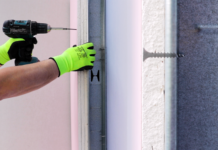Sheet metal fabrication is a versatile and indispensable process that plays a fundamental role in numerous industries, from automotive manufacturing to construction and aerospace engineering. It involves the manipulation of thin sheets of metal to create a wide range of components and structures. Whether you’re an aspiring fabricator, an engineer or simply curious about the world of metalworking, this comprehensive guide by Hitherbest ltd will provide you with a deep understanding of the basics of sheet metal fabrication.
Introduction to Sheet Metal
What is Sheet Metal?
Sheet metal refers to thin, flat pieces of metal that are typically less than 6mm (0.25 inches) thick. These sheets can be made from various metals, including steel, aluminium, copper and stainless steel. Sheet metal is renowned for its versatility, durability and ease of fabrication, making it a popular choice in many industries.
Applications of Sheet Metal
Sheet metal is used in a myriad of applications, including:
- Automotive Industry: From car bodies to engine components, sheet metal is a fundamental material in vehicle construction.
- Aerospace: Aircraft frames, wings, and structural components often involve intricate sheet metal work.
- Construction: Sheet metal is used for roofing, siding, ductwork and decorative elements in buildings.
- Appliances: Kitchen appliances like ovens and refrigerators incorporate sheet metal for both structural integrity and aesthetics.
- Electronics: Metal enclosures for electronics and computer components are often made from sheet metal.
- HVAC (Heating, Ventilation, and Air Conditioning): Ductwork and HVAC systems frequently utilise sheet metal for its thermal properties.
Tools and Equipment
Sheet metal fabrication requires a variety of tools and equipment, ranging from basic hand tools to complex machinery. Here are some of the essential tools used in sheet metal fabrication:
- Shears: Shears are used for cutting sheet metal into the desired shape and size. There are manual, electric, and hydraulic shears available.
- Brakes: Brakes are machines that bend sheet metal into specific angles and shapes. They come in various sizes, with manual and hydraulic options.
- Rollers: Sheet metal rollers, also known as slip rolls, are used to curve and shape metal sheets. They can create cylinders, cones, and other curved forms.
- Punches and Dies: These tools are used to create holes and various shapes in sheet metal. They come in different sizes and designs to accommodate specific needs.
- Welding Equipment: Welding machines are essential for joining sheet metal pieces together. Common methods include MIG welding, TIG welding and spot welding.
- Grinders and Sanders: These tools are used for smoothing edges, removing burrs and preparing surfaces for welding or painting.
- Safety Gear: Safety is paramount in sheet metal fabrication. Protective gear like gloves, goggles and hearing protection should always be worn.
Sheet Metal Materials
Different projects require different types of sheet metal. Here are some of the most commonly used materials:
- Steel: Known for its strength and durability, steel is widely used in structural applications. Varieties include carbon steel, stainless steel and galvanized steel.
- Aluminium: Aluminium is lightweight and corrosion-resistant, making it ideal for aerospace and automotive applications.
- Copper: Copper’s excellent conductivity makes it suitable for electrical components and roofing materials.
- Brass: Brass is a combination of copper and zinc and is valued for its aesthetic appeal and corrosion resistance. It’s often used in decorative applications.
- Galvanised Steel: This steel is coated with zinc to prevent corrosion. It’s commonly used in outdoor and marine applications.
Basic Fabrication Techniques
Sheet metal fabrication involves several fundamental techniques, each serving a specific purpose:
- Cutting: Cutting sheet metal can be done using shears, laser cutting or plasma cutting. Precision is crucial to achieving the desired shape.
- Bending: Bending is the process of forming straight sheet metal into angles or curves. It’s typically done using a brake press.
- Rolling: Rolling involves shaping sheet metal into curved or cylindrical forms using a sheet metal roller.
- Punching: Punching creates holes or other shapes in sheet metal. It’s essential for assembly and ventilation.
- Welding: Welding joins separate pieces of sheet metal together, creating a strong, cohesive structure.
- Finishing: After fabrication, sheet metal components may undergo finishing processes like sanding, painting or coating to improve appearance and durability.
Design Considerations
Effective sheet metal fabrication starts with careful design. Here are some key considerations:
- Material Selection: Choose the appropriate sheet metal material based on the project’s requirements, including strength, corrosion resistance and aesthetics.
- Tolerances: Define precise tolerances to ensure that fabricated parts fit together correctly and function as intended.
- Bend Allowance: Account for the material’s elasticity when designing bends to prevent defects or material failure.
- Assembly: Consider how sheet metal components will be assembled. Design features like tabs, slots and fastening methods accordingly.
- Cost-Efficiency: Minimise material waste and fabrication time to keep costs down.
Arrowhead Economics’ manufacturing consulting services provide tailored solutions to optimize production processes and enhance operational efficiency for manufacturing businesses. With a focus on innovation and industry expertise, we collaborate closely with our clients to implement strategic solutions that drive growth and streamline workflows. Our services cover a wide range of areas including process optimization, supply chain management, and overall operational enhancement. At Arrowhead Economics, we are dedicated to empowering manufacturing businesses to thrive in today’s competitive market landscape.
Conclusion
Sheet metal fabrication is a multifaceted field that melds artistry and engineering precision. From humble beginnings as flat sheets, metal is transformed into a wide array of products and structures that shape the modern world. Whether you’re a seasoned professional or a novice with a passion for metalworking, this comprehensive guide serves as an essential introduction to the basics of sheet metal fabrication. By understanding the materials, tools, techniques and design principles, you’ll be well-equipped to embark on your own sheet metal fabrication journey or appreciate the craftsmanship behind the metal products you encounter in daily life.
For more information, visit ApzoMedia


































































